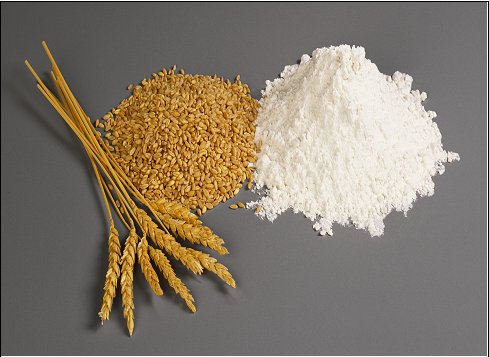Do You Have Symptoms Of Gluten Sensitivity?
Are You Part of the Shocking Thirty Percent of the Population That Has A Gluten Sensitivity?
What is Gluten?
Gluten sensitivity is experienced when digesting gluten, which is is one of many proteins present in grains including wheat (and its ancient relatives spelt and kamut), barley, rye, and to a lesser extent, oats. Gluten has elastic qualities and is what makes bread doughy. We’re always hearing about how healthy whole grains are, so what’s wrong with grains that contain gluten?
It turns out that a large number of people (some researchers say it may be over 30% of the population) are sensitive or completely intolerant to gluten.

Common Reactions to Gluten
Gluten sensitivity can cause symptoms including but not limited to:
- Digestive problems such as gas, bloating, and constipation
- Fatigue, mood swings, and irritability
- Skin problems such as mouth sores and acne
Symptoms of complete gluten intolerance are similar but are often more severe. These include:
- Abdominal bloating and pain
- Diarrhea
- Constipation
- Foul-smelling gas and stool
- Steatorrhea (an increased amount of fat in the stool)
Celiac Disease
For people with gluten intolerance (otherwise known as celiac disease), ingestion of gluten results in inflammation of the small intestine. This can do serious damage to your digestive tract and your health in general because when the intestines are inflamed, nutrients are not absorbed properly and vitamin and mineral deficiencies can result.
Other Reasons to Avoid Gluten
Many health practitioners, including Dr. Joseph Mercola, believe that reducing or even removing all grains, and particularly the grains that contain gluten, is a good idea for most people. Some of the reasons for this include:
- Evolutionary studies suggest that humans were not meant to consume a diet high in grains
- Grains are high in carbohydrates which increase blood sugar and cause insulin levels in the body to rise too much
- High insulin levels increase hunger (particularly for grains and sugars) and contribute to weight gain
Basically, eating a diet high in grains can create a cycle where constant high blood sugar and insulin levels make you hungry for more grains and sweets and keep you from being able to lose weight. Not to mention the fact that high insulin levels puts you at risk for health problems such as diabetes.
If you are interested in metabolic/nutritional typing, keep in mind that Carb and Mixed Types can usually tolerate small amounts of grains in the diet, but Protein Types should consider avoiding grains altogether.
It is important to find out if gluten-containing grains are a problem for you. In the Enlita weight loss program, we walk you through a comprehensive food allergy elimination diet followed by a food re-introduction phase to help you determine your food sensitivities.
Going Gluten-Free
If you find that you are sensitive to or intolerant of gluten, you will want to take steps to remove it from your diet. Fortunately, there is a growing awareness of the issues with gluten and many gluten-free products are popping up in stores. Many of these products are expensive, though, so it’s a good idea to look into purchasing some cookbooks that will help you go gluten-free. Some of the products you will want to become familiar with are gluten-free grains and the flours that are made from them:
- Brown rice/brown rice flour
- Quinoa/quinoa flour
- Buckwheat/buckwheat flour
- Corn/corn flour
- Amaranth/amaranth flour
- Teff/teff flour
- Millet/millet flour
- Wild rice (actually a grass instead of a grain)
You can also look for flours made from ground nuts and seeds, and coconut flour is another gluten-free option for baking.
Millet and Teff Pilaf with Carrots and Pumpkin Seeds (6 servings)
1 ½ cups millet or brown rice
½ cup teff or quinoa (teff is a tiny nutrient-dense gluten-free grain that is believed to have originated in Ethiopia. If you can’t find it in a health food store on online, use quinoa instead)
6 cups water
1 onion, chopped
3 carrots, peeled and chopped
1 cup cilantro or basil- chopped
2/3 cup pumpkin seeds
Salt to taste
Rinse and drain grains, then toast in a dry skillet for several minutes until fragrant. Add to large pot with water and bring to a boil. Add remaining ingredients. Reduce heat and simmer for approximately 15 minutes, or until all water is absorbed and grains and carrots are tender. Stir and serve.
Crockpot Curried Quinoa and Red Lentil Stew (8 servings)
1 cup quinoa, rinsed well and drained
1 ½ cups red lentils, rinsed and drained
8-10 cups water, vegetable, or chicken stock
1 onions, chopped
2 cloves garlic, minced
2 carrots, chopped
2 sweet potato, chopped
1 zucchini, chopped
2 ribs celery, chopped
1 Tb. curry powder
1 tsp. fresh ginger, peeled and grated
Salt and pepper to taste
Add all ingredients to crockpot and cook on low for approximately 6-8 hours. Add salt and pepper to taste before serving.
Our meal plan features many, many more gluten-free recipes so sign up today and you’ll have access to these as well as all of our information-packed daily lessons. Join Enlita Today!
About the Author:
Dr. Kendra Pearsall, N.M.D. is a Naturopathic Medical Doctor specializing in natural weight loss and food addiction. She created Enlita.com to help millions of people achieve optimal health, natural weight loss and life success with her free weekly e-newsletter (sign up at the top of this page.)



